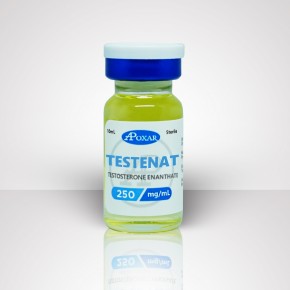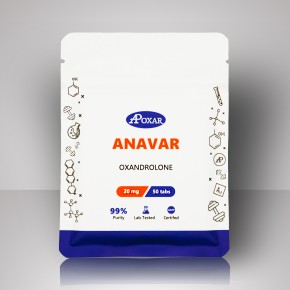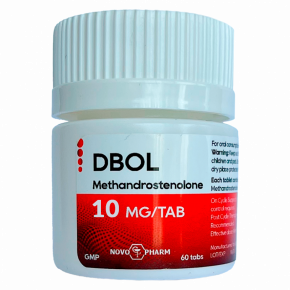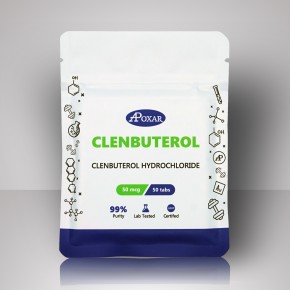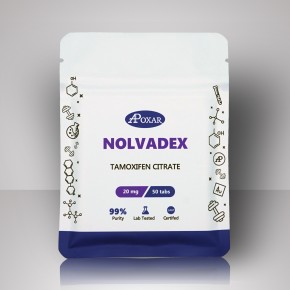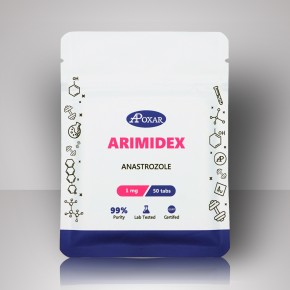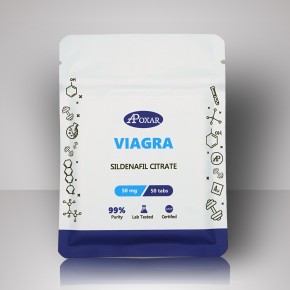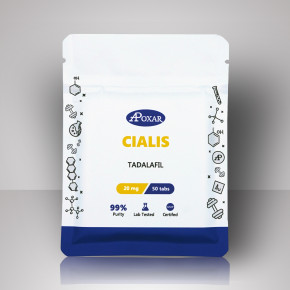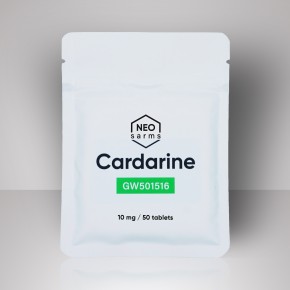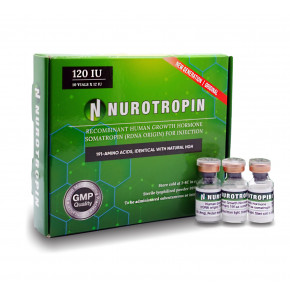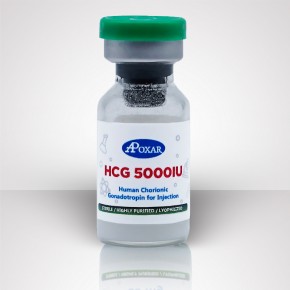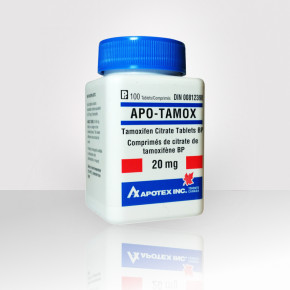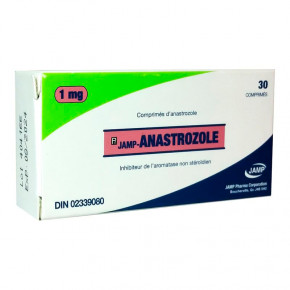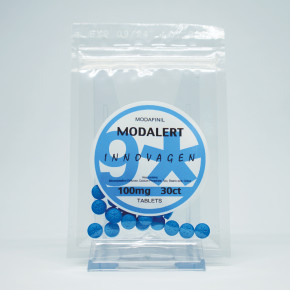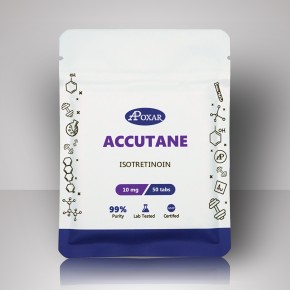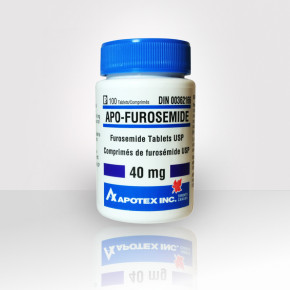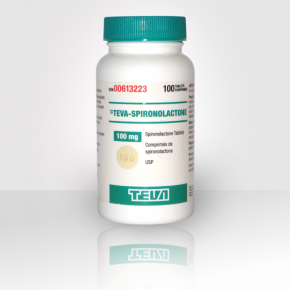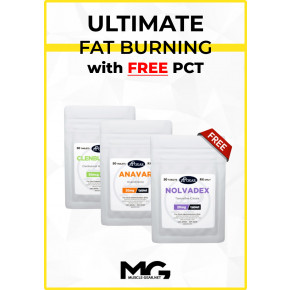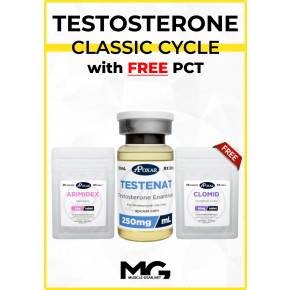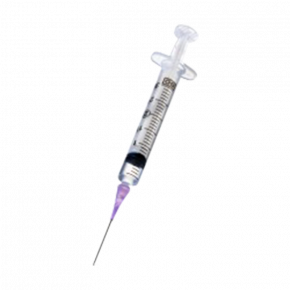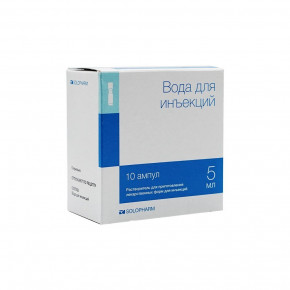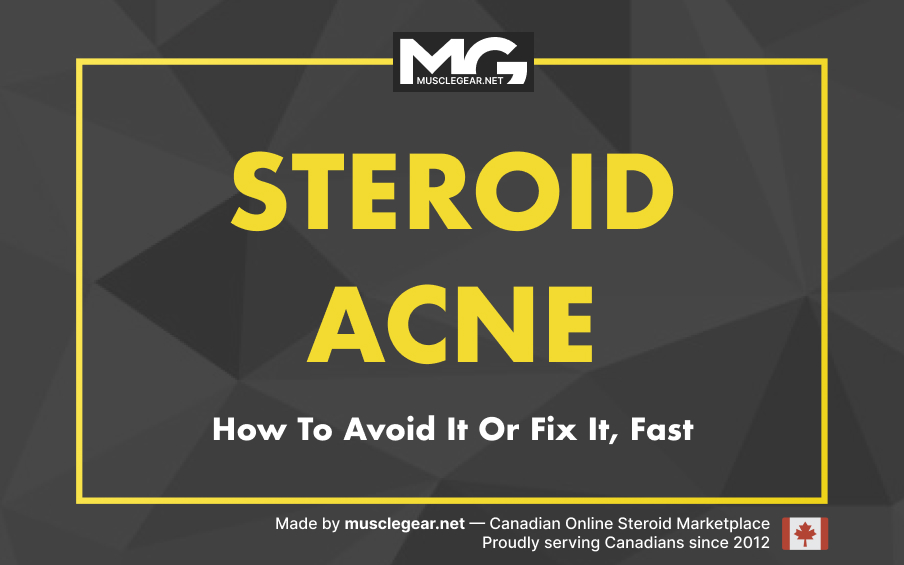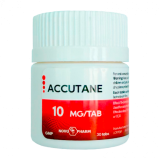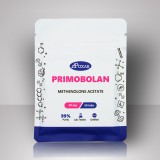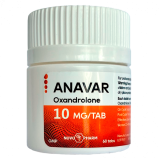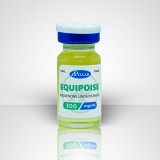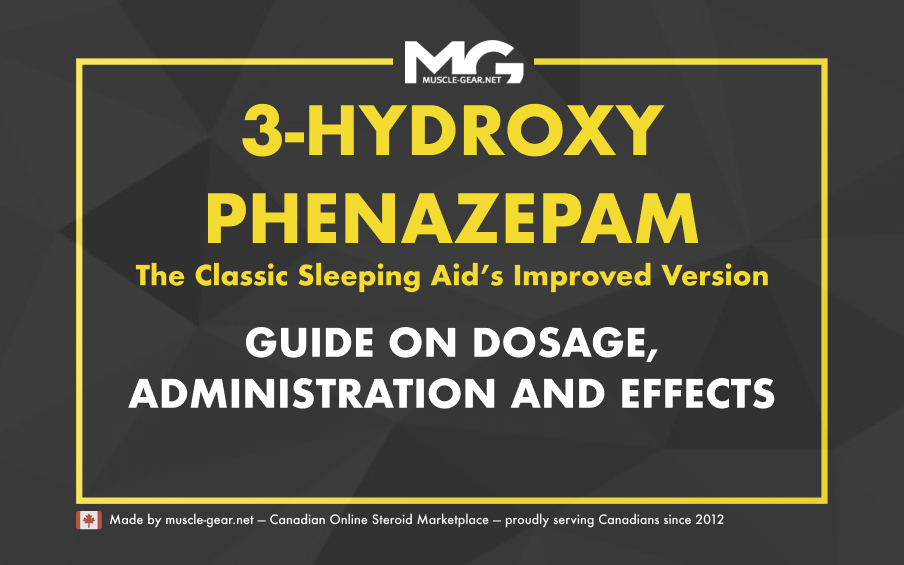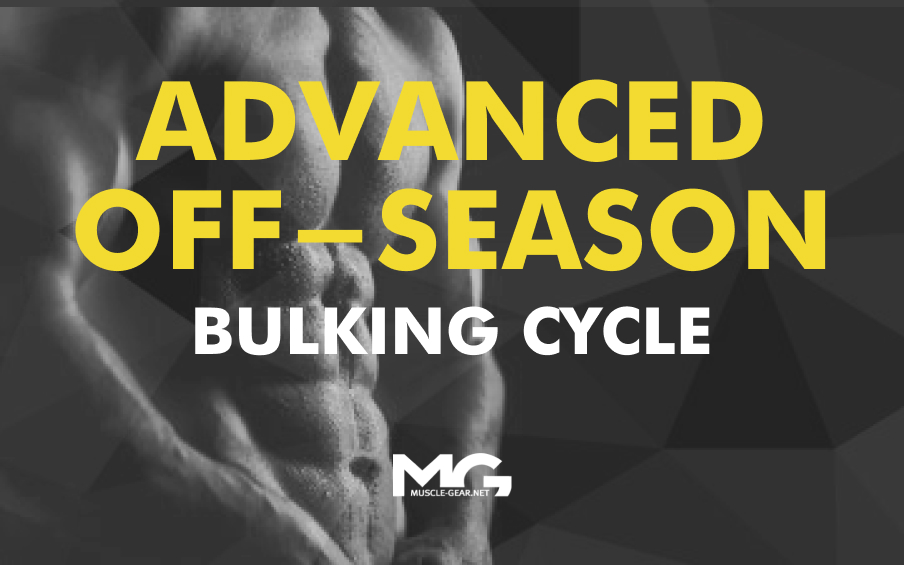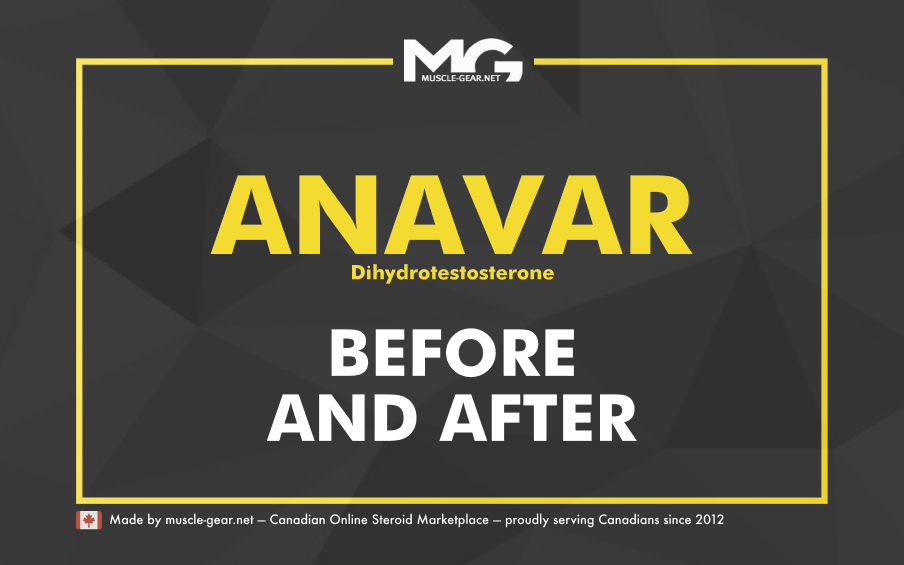Steroid acne isn’t your regular “had pizza last night” breakout. It shows up when your body gets hit with hormone-shifting meds like corticosteroids (often legit prescriptions for asthma, allergies, inflammation) or anabolic steroids.
The acne tends to pop up fast, spread everywhere, and ignore the usual skincare routine you’ve been loyal to.
How to identify steroid acne
The pattern is the giveaway:
- Super similar-looking bumps;
- Tightly packed;
- Often on the chest, shoulders, back, or face.
If you see this, you — most likely — have steroid acne, not just a usual breakout.

Why it happens
Your skin reacts to hormone changes. Steroids crank up oil production and inflammation. That combo clogs pores like crazy. Doesn’t matter if your skin was clear last week — you can still get hit with a sudden breakout:
- Extra oil floods your pores;
- Bacteria multiply faster;
- Your skin gets inflamed;
Boom — steroid acne. Simple as that.
Mechanism of action
Think of steroid acne as a three-part chain reaction. When androgen levels go up:
- Sebum production ramps up. Oil glands get bigger and more active. More oil = clogged pores.
- Keratinocytes pile up. Dead skin cells get stickier, so pores clog faster.
- Cutibacterium acnes bacteria thrive. More oil = more food for bacteria, which triggers inflammation.
- Inflammation skyrockets. Androgens directly amplify inflammatory pathways in skin.
The end result:
Uniform, stubborn acne that often hits shoulders, chest, and back.
Signs you’re dealing with steroid acne
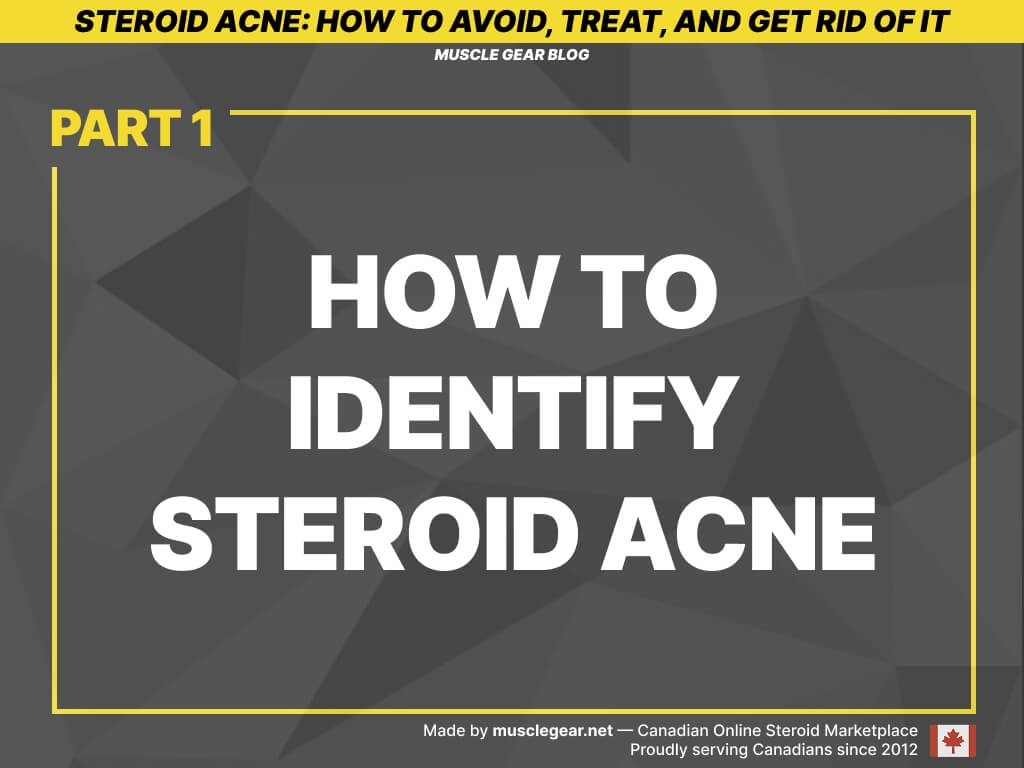
If the breakouts hit out of nowhere after starting a steroid medication, that’s a red flag. Another clue: all the bumps look almost the same. Not a mix of whiteheads, blackheads, and cysts — more like someone copy-pasted the same pimple everywhere.
- Sudden onset;
- Monotonous bumps;
- Shows up on body, not just face;
- Doesn’t care about your usual skincare routine.
What you can actually do
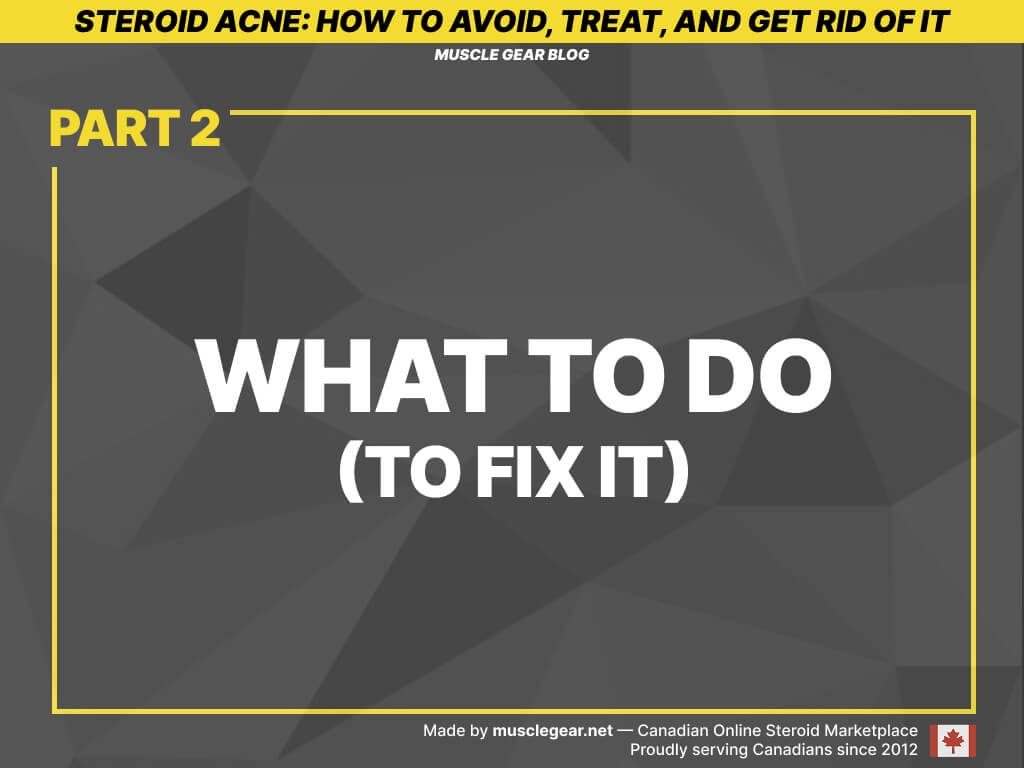
Here’s the honest take: you can’t fix steroid acne if the steroid causing it doesn’t get addressed.
You’ve got options:
- Keep your skincare simple;
- Use gentle cleansers (nothing harsh or “burny”);
- Stick with non-comedogenic moisturizers;
- Over-the-counter benzoyl peroxide or salicylic acid can help;
- Be patient — this type of acne clears slower.
Is steroid acne a dead giveaway to “someone's on gear”?
No, acne, or “backne”, is not a dead giveaway, but it’s definitely a yellow flag.
Here’s why:
- Some people get acne just from puberty-level hormone fluctuations;
- Some people get acne from non-steroid meds (e.g., corticosteroids);
- Some people are genetically prone to body acne regardless;
- Some people on gear have zero skin issues because of genetics.
But there are patterns that make people suspicious:
- Sudden explosive acne on shoulders/back;
- Acne appearing in someone who never had it before;
- Breakouts that line up with muscle/strength changes.
Again — not definitive proof.
NOTE: It’s not just anabolic steroids. “Steroid acne (SA) may occur after the administration of topical or systemic corticosteroids.” Source: M.A. Fung, T. G. Berger (Dermatology Magazine, Bazel, link to publication)
Personal experience: IFBB Pro — on steroid acne
To keep things real, we’ve asked our team’s only IFBB Pro card holder about his experience. With the sheer volume of gear he had cycled throughout his 20 years in competitive bodybuilding (name is omitted as per his request), he has unique perspective on steroid acne:
“I’ve had steroid acne all over my back in my first cycle. Dbol and test e in laughable doses, but I didn’t have acne in high school, so it was my first time. It’s not really true that it looks different. Gear f**ks with your skin so much you get all sorts of black dots, white pimples, rashes, all in the same area in your mid back. I didn’t really have it as hard as some pics online show because I’ve always had a hardcore hygiene routine and sweat didn’t make it worse for me. My best advice is to be patient, it will go away when you’re done with pct. It worked for me with no antibiotics and my doc said it’s OK. Shower more, don’t even think about touching it, change your sheets twice a week, and eat clean. If it goes really bad, run isotretinoin, but it dries your skin out and can be tough.”
Can Accutane help with acne on steroids?
Yes, Accutane (aka isotretinoin, vitamin A) is basically the nuclear button of acne treatment.
Here’s what makes it effective:
- Shrinks oil glands so they can’t drown your skin anymore;
- Reduces oil production to the lowest level your skin can manage;
- Stops pores from clogging by regulating how skin cells shed;
- Cuts down the acne-causing bacteria by starving them;
- Reduces inflammation directly.
Steroid acne feeds on oil production and inflammation. Accutane attacks both.
NOTE: You can get 10mg pills of Accutane by Novo-Pharm or Accutane by Apoxar in our store with quick nationwide shipping across Canada.
When to start Accutane
Dermatologists usually start thinking about prescribing you Accutane when:
- Acne is severe;
- Acne is painful;
- Acne is leaving scars;
- Other treatments fail;
- Acne is driven by hormonal chaos your skin can’t handle.
Steroid acne sometimes falls into that category because it’s fast, aggressive, and stubborn.
What Not To Do
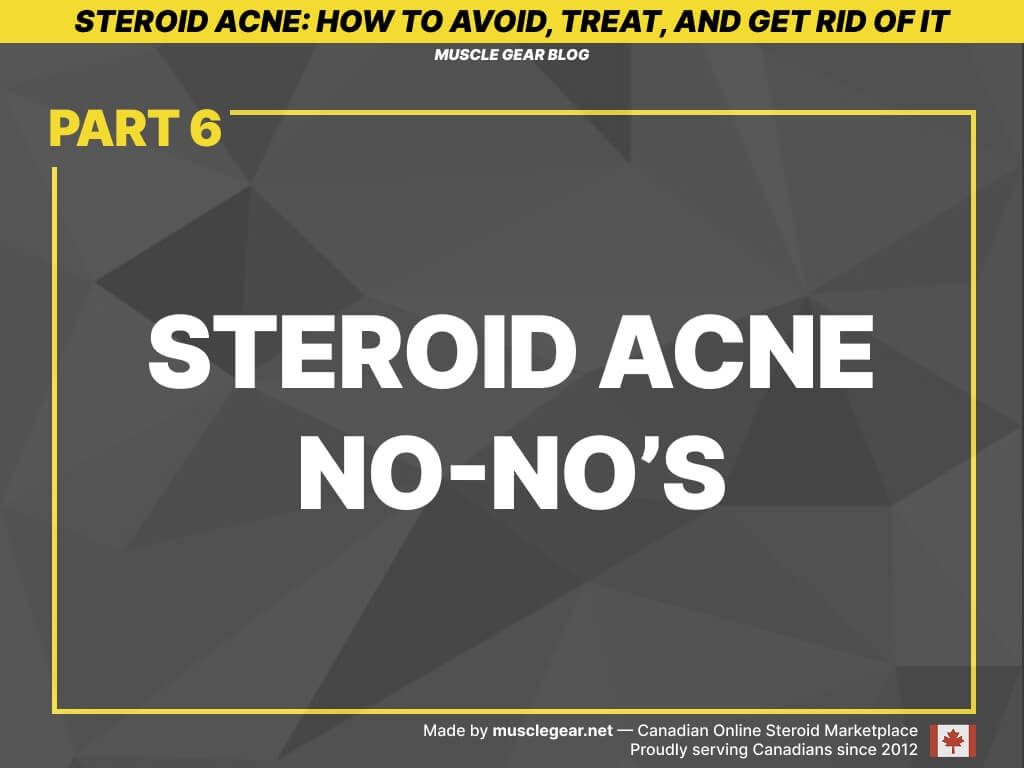
People panic-buy every product they see when they get acne. Don’t do that. Steroid acne ignores most hyped-up creams and solutions anyway.
Avoid these traps:
- Scrubbing your skin like you’re sanding wood;
- Layering ten different acne products;
- Picking acne (seriously, it makes things worse);
- Adding “natural supplements” that mess with hormones.
When To Get Help
If it’s getting worse, painful, or messing with your confidence, get a dermatologist involved. They see this all the time. They won’t judge you. They’ll just get you a plan that works.
A dermatologist might suggest:
- Prescription creams;
- Antibiotics for inflammation;
- Adjusting the steroid dosage with your primary doctor.
Natural Remedies for Steroid Acne You Should Never Try
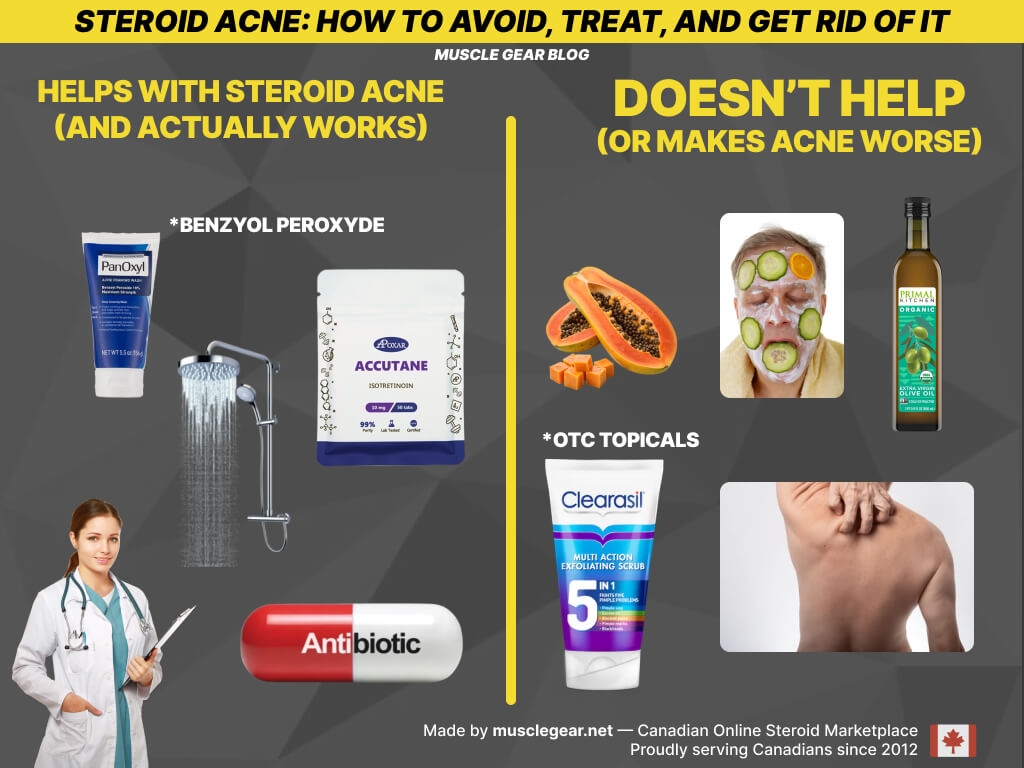
DIY potions and lotions may seem like the healthiest way to treat your skin; however, experts say that not all natural DIY fixes work. Some of them do more harm than good.
If you pick up rumors about natural acne treatment, it is advisable that you verify the source and if the treatment actually works before you decide to use it on your skin.
Below are some natural remedies that are rumored to be effective but simply do not work:
Papaya vs acne
Papaya is a nutritious fruit that has a high content of vitamin C and vitamin A.
Even though it is fast gaining popularity among many people struggling with acne, it has a downside: the papain.
Papain is well known in South America for its strong properties as a meat tenderizer. It accelerates digestion and breakdown of proteins. Its mechanism of action is the same as that of bromelain — a compound found in pineapples.
If you apply papaya with raw honey or lemon juice, it will damage collagen proteins present in the skin. This will leave your skin susceptible to irritation from external threats.
The skin becomes weaker and takes more time to heal acne. Your skin might even start aging at a faster rate than it is supposed to. When used as a skin lightener, papaya can cause an outbreak of itchy rashes.
Olive Oil vs acne
They are very few “super foods” that can rival olive oil in terms of health benefits and presence in numerous health products. Olive oil has many benefits, which include protecting the heart and improving brain function.
When ingested, olive oil can clear acne, but when used topically on already damaged skin, it can disrupt the skin barrier. Therefore, if you have olive oil in your kitchen, it is best if you used it as salad dressing, rather than a topical home remedy.
Flaxseed Oil vs acne
Unlike fish oils, which supply animal-based Omega-3, flaxseed oil supplies plant-based Omega-3.
Flaxseeds oil has alpha linolenic acid, a compound that is said to improve the defenses of the skin against ultra violet radiation. However, when flaxseed oil is applied topically, it has zero effects. It just clogs your pores, which actually slows the healing down.
Do some steroids cause acne more than others?
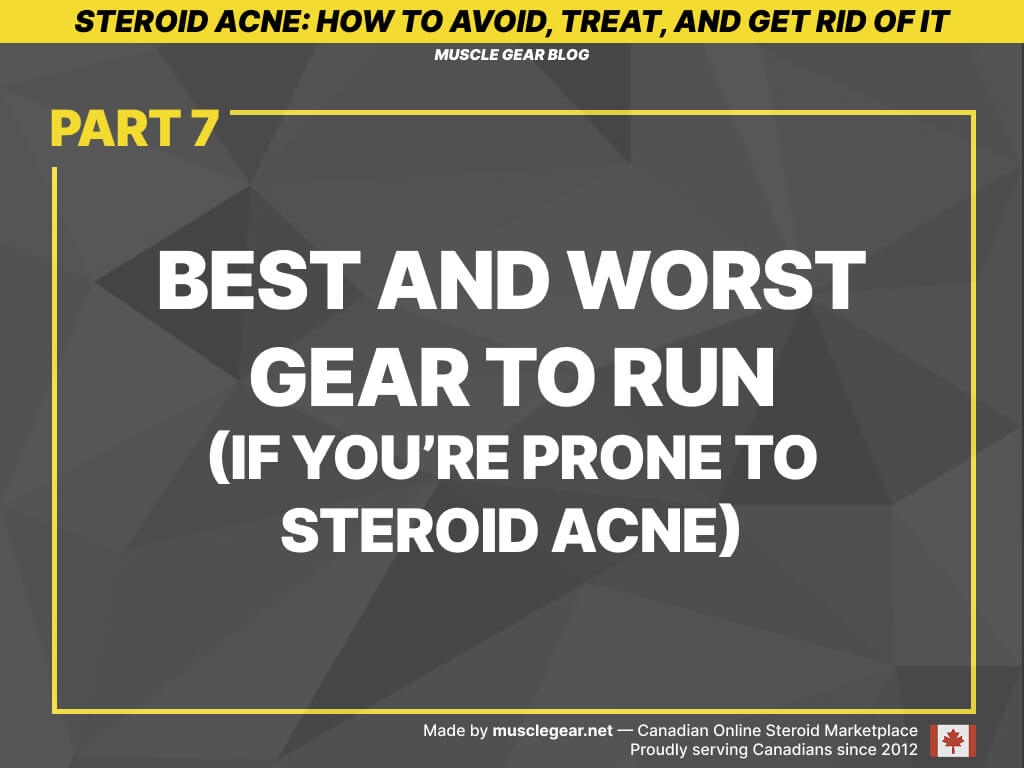
Short answer: yes, it’s about how strongly a compound messes with your androgen levels.
Here’s the pattern:
- Anything that spikes androgens fast — higher acne risk (think quick-acting orals, like Dianabol);
- Compounds with strong androgenic activity — higher acne risk (think Testosterone in more than TRT doses, Winny, Tren).
Anabolic steroids that do not cause acne (or at least cause less of it, according to reviews)
The steroids that cause the least acne are typically those with low androgenic activity and those that do not convert to potent androgens like Dihydrotestosterone (DHT) or estrogen.
The key is to look for compounds with a high anabolic-androgenic ratio:
#1 — Primobolan (Methenolone)
Primobolan is a DHT-derivative, but it is uniquely modified to be very mild. It has a very low androgenic rating and does not convert to estrogen.
Because it is already a mild androgen and doesn't metabolize into stronger ones in the skin, it has minimal stimulating effect on the sebaceous glands.
It is often cited as the "safest" in terms of skin side effects, but it is also one of the mildest in terms of muscle gains and is notoriously faked and expensive.
#2 — Anavar (Oxandrolone)
Anavar is another DHT-derivative that has been significantly altered. It has a very high affinity for sex hormone-binding globulin (SHBG) and a very low affinity for the 5-alpha reductase enzyme in the skin (which creates DHT).
This means it has minimal direct activity in the sebaceous glands. While not completely free of side effects, it is one of the most well-tolerated orals for acne.
#3 — Deca-Durabolin (Nandrolone Decanoate)
Deca Durabolin has a very low androgenic rating. Crucially, it is converted by the 5-alpha reductase enzyme into dihydronandrolone (DHN), which is a less potent androgen than nandrolone itself.
This is the opposite of testosterone, which converts to the more potent DHT. This reduction in local androgenic activity in the skin and prostate makes it a much lower risk for acne compared to testosterone or trenbolone.
NOTE: Deca can cause acne through other mechanisms, particularly due to its progestogenic nature.
#4 — Equipoise (Boldenone Undecylenate)
EQ is structurally similar to testosterone but has a lower androgenic rating. It aromatizes to estrogen (though less than testosterone) but does not convert to a potent DHT-like metabolite.
For many, it is milder on the skin than testosterone, but it is not as clean as Primobolan or Anavar.
Steroids that are more likely to cause acne (if you’re prone to it)
The most severe cases of acne are predominantly linked to oral steroids with a 17-alpha alkylated structure, which allows them to survive liver metabolism, and certain injectables with high androgenic ratings.
#1 — Trenbolone (Injectable)
Trenbolone is a progestin and a very powerful androgen that doesn't convert to DHT but is itself extremely androgenic. It directly overstimulates the sebaceous glands, making it a top cause of severe, often cystic, back and shoulder acne.
#2 — Testosterone (All Esters, Injectable/Oral)
Testosterone is the foundational anabolic steroid. The body converts it into two primary metabolites:
- Dihydrotestosterone (aka DHT) — a potent androgen that directly binds to receptors in the sebaceous glands, signaling them to produce more sebum (oil);
- Estrogen (via aromatase enzymes, aromatization) — that can also worsen acne by increasing skin oiliness and water retention, which can clog pores.
Since it serves as a precursor for both DHT and estrogen, high-dose testosterone cycles are almost guaranteed to cause acne if you’re prone to it.
#3 — Anadrol (Oxymetholone, Oral)
Anadrol, as a 17-aa oral steroid is infamous for causing rapid and severe "Anadrol acne." It is highly androgenic and does not need to convert to DHT to cause problems; it directly stimulates the sebaceous glands. The onset can be very quick after starting a cycle.
#4 — Winstrol (Stanozolol, Oral/Injectable)
Winstrol is a DHT-derivative. It does not aromatize to estrogen, but it is a very strong androgen itself. It is notorious for causing a specific type of dry, brittle joints and also triggering severe acne on the shoulders, back, and chest.
#5 — Dianabol (Methandrostenolone, Oral)
Like Anadrol, Dbol is another 17-aa oral that is a common culprit. It converts into estrogen significantly, contributing to water retention and increased oil production, which exacerbates acne.
Bottom Line
Steroid acne is stubborn, loud, and extremely rude — but it’s fixable. You just need the right approach and a bit of patience.
Frequently Asked Questions (FAQ) About Steroid Acne
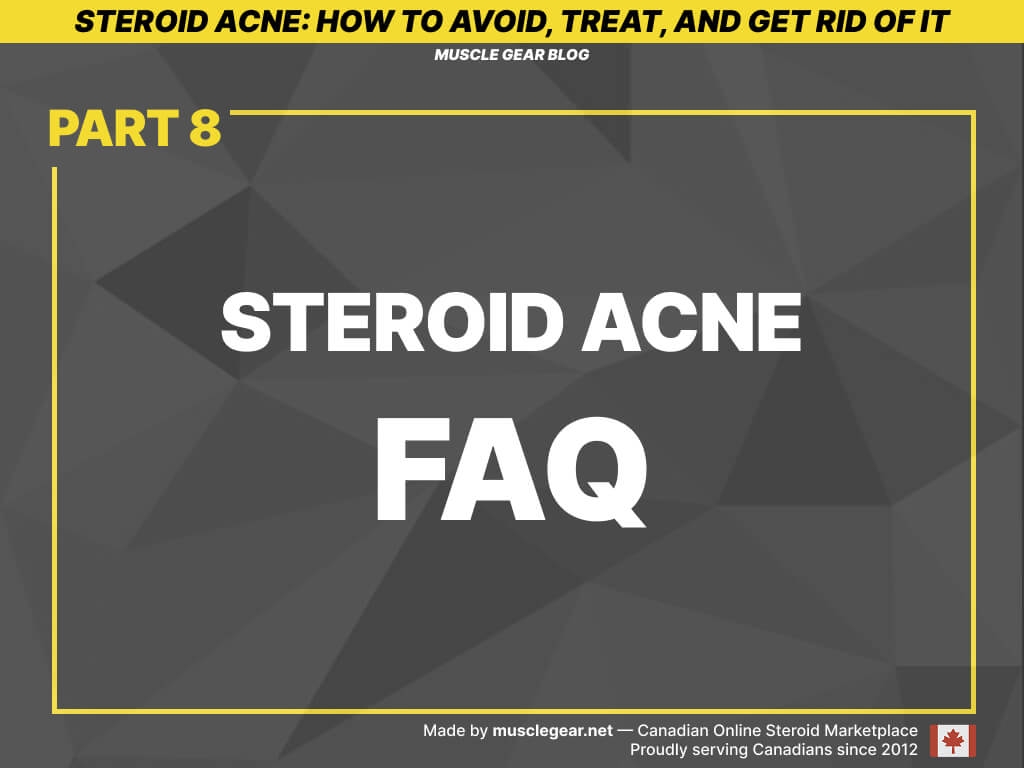
What causes steroid acne?
Steroid acne is primarily caused by the androgenic (masculinizing) properties of anabolic steroids. These androgens overstimulate the sebaceous (oil) glands in your skin, leading to excessive oil (sebum) production.
This excess oil, combined with a rapid shedding of dead skin cells that clog pores, creates a perfect environment for bacteria to grow, resulting in inflammation and acne.
What does steroidal acne look like?
Steroidal acne typically appears as a concentrated rash of copy-pasted pimples on the chest, shoulders, and upper back, though it can also affect the face and arms.
What steroid does not cause acne?
No anabolic steroid is completely guaranteed not to cause acne, as individual genetics play a huge role. However, steroids with very low androgenic ratings are your best bet. These include:
- Primobolan (Methenolone)
- Anavar (Oxandrolone)
- Deca-Durabolin (Nandrolone Decanoate)
Keep in mind that these milder steroids still suppress natural testosterone, and a "testosterone base" is often required in a cycle.
How to prevent acne on a steroid cycle?
Prevention is the best strategy. Key steps include:
- Go for low-androgenic steroids if you are prone to acne;
- Use long-ester injectables (like Testosterone Enanthate) and pin frequently to avoid hormonal peaks and troughs.
- Shower immediately after sweating, use anti-bacterial (e.g., Benzoyl Peroxide) or exfoliating (e.g., Salicylic Acid) body washes;
- Use non-comedogenic moisturizers and consider a prescription topical retinoid (like Tretinoin) to prevent pores from clogging.
How to control steroid acne once it appears?
If prevention fails, a multi-pronged approach is needed:
- Continue with Benzoyl Peroxide and Salicylic Acid washes. A prescription topical retinoid is highly effective.
- For moderate to severe acne, a dermatologist may prescribe oral antibiotics (e.g., Doxycycline) to reduce inflammation and bacteria.
- Consider Accutane (Isotretinoin). This is the most powerful treatment for severe, cystic steroid acne.
How long does steroid acne last and how long until it goes away?
The duration depends on the cause:
- On-Cycle — acne caused by a specific compound will typically persist as long as you are taking that compound and your hormone levels remain elevated.
- Post-Cycle — acne that flares up after stopping steroids (during PCT) can be the most severe and may last for several weeks to a few months as your hormonal balance slowly returns to its natural baseline. Complete resolution can take time.
How to get rid of steroid acne?
"Getting rid" of steroid acne involves actively treating existing acne and waiting for your hormones to stabilize.
- The most direct way is to discontinue the androgenic compounds causing the issue.
- Follow the control strategies listed above (topicals, prescriptions from a doctor).
- Be patient. It takes time for the body to metabolize the steroids, for hormone levels to normalize, and for the skin to heal. Consistency with your treatment is key.
Once the active acne is gone, you may need to treat any resulting scars with procedures like laser therapy, microneedling, or chemical peels.
Sources
- THE PATHOGENESIS OF TOPICAL STEROID ACNE — https://www.jidonline.org/article/S0022-202X(15)44196-X/pdf
- Steroids Used to Treat Acne Vulgaris: A Review of Efficacy, Safety, and Clinical Considerations — https://jddonline.com/articles/steroids-used-treat-acne-vulgaris-review-of-efficacy-safety-clinical-considerations-s1545961624p7846x
- Severe ulcerated ‘bodybuilding acne’ caused by anabolic steroid use and exacerbated by isotretinoin — [NCBI]
- The impact of steroids on acne — https://www.laroche-posay.co.uk/en_GB/the-impact-of-steroids-on-acne.html
- A prospective study of acute-onset steroid acne associated with administration of intravenous corticosteroids — https://pubmed.ncbi.nlm.nih.gov/10681613/
- What to do about steroid acne — Medical News Today

 Trusted by 50,000 Customers
Trusted by 50,000 Customers